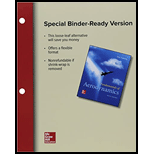
Using the results of linearized theory, calculate the lift and wave-drag coefficients for an infinitely thin flat plate in a Mach 2.6 freestream at angles of attack of
(a)
Compare these approximate results with those from the exact shock- expansion theory obtained in Problem 9.13. What can you conclude about the accuracy of linearized theory in this case?
(a)
The lift and wave drag coefficients and comparison of accuracy.
Answer to Problem 12.1P
The lift and drag coefficients are
Explanation of Solution
Given:
The angle of attack is
The Mach number is
Formula used:
The expression for lift is given as,
The expression for drag is given as,
Calculation:
The coefficient of lift can be calculated as,
Refer to problem 9.13, the error can be calculated as,
The coefficient of drag can be calculated as,
Refer to problem 9.13, the error can be calculated as,
Conclusion:
Therefore, the lift and drag coefficients are
(b)
The lift and wave drag coefficients and comparison of accuracy.
Answer to Problem 12.1P
The lift and drag coefficients are
Explanation of Solution
Given:
The angle of attack is
The Mach number is
Formula used:
The expression for lift is given as,
The expression for drag is given as,
Calculation:
The coefficient of lift can be calculated as,
Refer to problem 9.13, the error can be calculated as,
The coefficient of drag can be calculated as,
Refer to problem 9.13, the error can be calculated as,
Conclusion:
The lift and drag coefficients in first case are
(c)
The lift and wave drag coefficients and comparison of accuracy.
Answer to Problem 12.1P
The lift and drag coefficients are
Explanation of Solution
Given:
The angle of attack is
The Mach number is
Formula used:
The expression for lift is given as,
The expression for drag is given as,
Calculation:
The coefficient of lift can be calculated as,
Refer to problem 9.13, the error can be calculated as,
The coefficient of drag can be calculated as,
Refer to problem 9.13, the error can be calculated as,
Conclusion:
Therefore, the lift and drag coefficients are
Want to see more full solutions like this?
Chapter 12 Solutions
Loose Leaf for Fundamentals of Aerodynamics
Additional Engineering Textbook Solutions
Vector Mechanics for Engineers: Statics and Dynamics
Mechanics of Materials (10th Edition)
Fluid Mechanics: Fundamentals and Applications
BASIC BIOMECHANICS
Database Concepts (8th Edition)
- 2. Figure below shows a U-tube manometer open at both ends and containing a column of liquid mercury of length l and specific weight y. Considering a small displacement x of the manometer meniscus from its equilibrium position (or datum), determine the equivalent spring constant associated with the restoring force. Datum Area, Aarrow_forward1. The consequences of a head-on collision of two automobiles can be studied by considering the impact of the automobile on a barrier, as shown in figure below. Construct a mathematical model (i.e., draw the diagram) by considering the masses of the automobile body, engine, transmission, and suspension and the elasticity of the bumpers, radiator, sheet metal body, driveline, and engine mounts.arrow_forward3.) 15.40 – Collar B moves up at constant velocity vB = 1.5 m/s. Rod AB has length = 1.2 m. The incline is at angle = 25°. Compute an expression for the angular velocity of rod AB, ė and the velocity of end A of the rod (✓✓) as a function of v₂,1,0,0. Then compute numerical answers for ȧ & y_ with 0 = 50°.arrow_forward
- 2.) 15.12 The assembly shown consists of the straight rod ABC which passes through and is welded to the grectangular plate DEFH. The assembly rotates about the axis AC with a constant angular velocity of 9 rad/s. Knowing that the motion when viewed from C is counterclockwise, determine the velocity and acceleration of corner F.arrow_forward500 Q3: The attachment shown in Fig.3 is made of 1040 HR. The static force is 30 kN. Specify the weldment (give the pattern, electrode number, type of weld, length of weld, and leg size). Fig. 3 All dimension in mm 30 kN 100 (10 Marks)arrow_forward(read image) (answer given)arrow_forward
- A cylinder and a disk are used as pulleys, as shown in the figure. Using the data given in the figure, if a body of mass m = 3 kg is released from rest after falling a height h 1.5 m, find: a) The velocity of the body. b) The angular velocity of the disk. c) The number of revolutions the cylinder has made. T₁ F Rd = 0.2 m md = 2 kg T T₂1 Rc = 0.4 m mc = 5 kg ☐ m = 3 kgarrow_forward(read image) (answer given)arrow_forward11-5. Compute all the dimensional changes for the steel bar when subjected to the loads shown. The proportional limit of the steel is 230 MPa. 265 kN 100 mm 600 kN 25 mm thickness X Z 600 kN 450 mm E=207×103 MPa; μ= 0.25 265 kNarrow_forward
- T₁ F Rd = 0.2 m md = 2 kg T₂ Tz1 Rc = 0.4 m mc = 5 kg m = 3 kgarrow_forward2. Find a basis of solutions by the Frobenius method. Try to identify the series as expansions of known functions. (x + 2)²y" + (x + 2)y' - y = 0 ; Hint: Let: z = x+2arrow_forward1. Find a power series solution in powers of x. y" - y' + x²y = 0arrow_forward
 Principles of Heat Transfer (Activate Learning wi...Mechanical EngineeringISBN:9781305387102Author:Kreith, Frank; Manglik, Raj M.Publisher:Cengage Learning
Principles of Heat Transfer (Activate Learning wi...Mechanical EngineeringISBN:9781305387102Author:Kreith, Frank; Manglik, Raj M.Publisher:Cengage Learning
